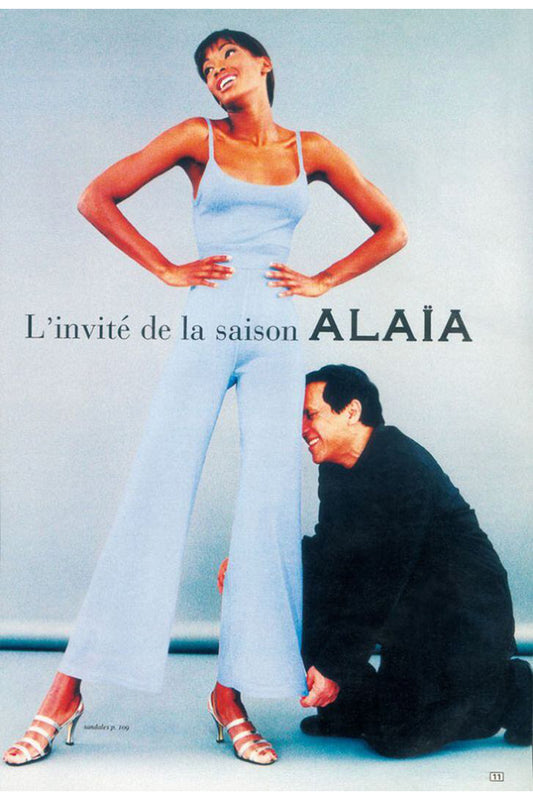Collection: ALAÏA
‘My obsession is to make women beautiful. When you create with that in mind, things can’t go out of fashion.’ - Azzedine Alaïa
Like no other designer, Azzedine Alaïa (1935) knew how to express the beauty of the female form in the most refined form of haute couture. His design process consisted of draping and sculpting on his models by hand and meticulously cutting out all his patterns, which was quite unusual for a designer. It was the local midwife in Tunisia who introduced Alaïa to art, and helped him enrol in sculpture at the Tunis Institute of Fine Arts, where he gained insight into the human form.

-
ALAÏA 2010S CORSET SKIRT
Regular price €320,00 EURRegular priceUnit price / per -
ALAÏA 2020S NEW KNIT SLIP DRESS
Regular price €320,00 EURRegular priceUnit price / per -
ALAÏA 2010S CLING AND FLARE DRESS
Regular price €590,00 EURRegular priceUnit price / per -

 Sold out
Sold outALAÏA S/S 1995 JUMPSUIT
Regular price €325,00 EURRegular priceUnit price / per
His twin sister Hafida taught Alaïa to sew, and it was a friend of his mother's who fed his instinctive creativity with copies of Vogue. In 1957 Alaïa went to Paris, where he worked for 5 days for Dior. His new wealthy female friends helped him out when he lost his job because his papers were not in order, and he became an au pair and a tailor. He worked for Guy Laroche and Thierry Mugler for a few years before starting his own label in 1979.
His first ready-to-wear fashion show in 1980 was well received by the fashion critics, and his sexy leather and rubber streetwear collection laid the foundations for the chic silhouette of the 1980s. Alaïa had his friends and clients to publicise his designs, and so interior designer Andrée Putman was stopped on the streets of New York by Bergdorff buyer Dawn Mello, asking who had designed her leather coat. Alaïa was offered to design a collection exclusively for the department store, and the launch broke sales records for a new designer at the retailer. Among his friends and clients were Tina Turner, Paloma Piccaso, Princess Caroline of Monaco and Grace Jones.
Known as the most perfect of perfectionists, Alaia even made his ready-to-wear samples like couture. He was a master couturier and a master of tailoring and knits. It was important to him that the pieces he designed would work in all eras and would not go out of style. The press dubbed him the ‘King of Cling’, after his signature figure-hugging silhouettes, which emphasises the bust and cinches in the waist, knitted bodycon dresses and broad shoulders with peplum skirts. He brought with his designs a formerly lack of youth to fashion.
He was a real inventor, and collected work from Christobal Balenciaga and Charles James just to take them apart, to understand their complex construction to sew it back together. To achieve the clinging effect he wanted in his clothes, he developed his own technological jersey fabrics. Alaïa was the first to bring knitwear design to a couture level. He made knitwear evening dresses when no one else was. Besides developing new technological fabrics, he was the first to stud clothes with metal, and he created the idea of the supermodel.
Alaïa was the first designer to follow his own schedule, rather than that of Paris couture week, presenting his new collections when they were ready. He mostly had private salon showings, and this lack of spectacle reflected his feelings about fashion. It was about the clothes and above all about the body. Supermodels were the best publicity for Alaïa, since he was able to highlight the body like no other. He had close, intimate friendships with most of them, and they would often break contracts and gigs to model for him and be paid out in clothes.








